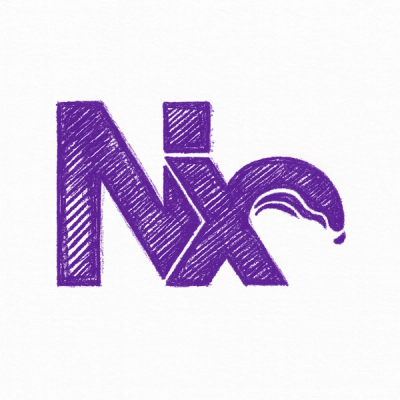microsoftgraph-python
Microsoft graph API wrapper for Microsoft Graph written in Python.
Before start
To use Microsoft Graph to read and write resources on behalf of a user, your app must get an access token from
the Microsoft identity platform and attach the token to requests that it sends to Microsoft Graph. The exact
authentication flow that you will use to get access tokens will depend on the kind of app you are developing and
whether you want to use OpenID Connect to sign the user in to your app. One common flow used by native and mobile
apps and also by some Web apps is the OAuth 2.0 authorization code grant flow.
See Get access on behalf of a user
Breaking changes if you're upgrading prior 1.0.0
- Added structure to library to match API documentation for e.g.
client.get_me() => client.users.get_me().
- Renamed several methods to match API documentation for e.g.
client.get_me_events() => client.calendar.list_events().
- Result from calling a method is not longer a dictionary but a Response object. To access the dict response as before then call
.data attribute for e.g r = client.users.get_me() then r.data.
- Previous API calls made through beta endpoints are now pointing to v1.0 by default. This can be changed to beta if needed with the parameter
api_version in the client instantiation.
- Removed Office 365 endpoints as they were merged with the Microsoft Graph API. See Office 365 APIs.
New in 1.0.0
- You can access to Requests library's Response Object for e.g.
r = client.users.get_me() then r.original or the response handled by the library r.data.
- New Response properties
r.status_code and r.throttling.
- You can pass Requests library's Event Hooks with the parameter
requests_hooks in the client instantiation. If you are using Django and want to log in database every request made through this library, see django-requests-logger.
- Library can auto paginate responses. Set
paginate parameter in client initialization. Defaults to True.
- Better method docstrings and type hinting.
- Better library structure.
Installing
pip install microsoftgraph-python
Usage
Client instantiation
from microsoftgraph.client import Client
client = Client('CLIENT_ID', 'CLIENT_SECRET', account_type='common') # by default common, thus account_type is optional parameter.
OAuth 2.0
Get authorization url
url = client.authorization_url(redirect_uri, scope, state=None)
Exchange the code for an access token
response = client.exchange_code(redirect_uri, code)
Refresh token
response = client.refresh_token(redirect_uri, refresh_token)
Set token
client.set_token(token)
Users
Get me
response = client.users.get_me()
Mail
List messages
response = client.mail.list_messages()
Get message
response = client.mail.get_message(message_id)
Send mail
data = {
subject="Meet for lunch?",
content="The new cafeteria is open.",
content_type="text",
to_recipients=["fannyd@contoso.onmicrosoft.com"],
cc_recipients=None,
save_to_sent_items=True,
}
response = client.mail.send_mail(**data)
List mail folders
response = client.mail.list_mail_folders()
Create mail folder
response = client.mail.create_mail_folder(display_name)
Notes
List notebooks
response = client.notes.list_notebooks()
Get notebook
response = client.notes.get_notebook(notebook_id)
Get notebook sections
response = client.notes.list_sections(notebook_id)
List pages
response = client.notes.list_pages()
Create page
response = client.notes.create_page(section_id, files)
Calendar
Get events
response = client.calendar.list_events(calendar_id)
Get event
response = client.calendar.get_event(event_id)
Create calendar event
from datetime import datetime, timedelta
start_datetime = datetime.now() + timedelta(days=1) # tomorrow
end_datetime = datetime.now() + timedelta(days=1, hours=1) # tomorrow + one hour
timezone = "America/Bogota"
data = {
"calendar_id": "CALENDAR_ID",
"subject": "Let's go for lunch",
"content": "Does noon work for you?",
"content_type": "text",
"start_datetime": start_datetime,
"start_timezone": timezone,
"end_datetime": end_datetime,
"end_timezone": timezone,
"location": "Harry's Bar",
}
response = client.calendar.create_event(**data)
Get calendars
response = client.calendar.list_calendars()
Create calendar
response = client.calendar.create_calendar(name)
Contacts
Get a contact
response = client.contacts.get_contact(contact_id)
Get contacts
response = client.contacts.list_contacts()
Create contact
data = {
"given_name": "Pavel",
"surname": "Bansky",
"email_addresses": [
{
"address": "pavelb@fabrikam.onmicrosoft.com",
"name": "Pavel Bansky"
}
],
"business_phones": [
"+1 732 555 0102"
],
"folder_id": None,
}
response = client.contacts.create_contact(**data)
Get contact folders
response = client.contacts.list_contact_folders()
Create contact folders
response = client.contacts.create_contact_folder()
Files
Get root items
response = client.files.drive_root_items()
Get root children items
response = client.files.drive_root_children_items()
Get specific folder items
response = client.files.drive_specific_folder(folder_id)
Get item
response = client.files.drive_get_item(item_id)
Download the contents of a specific item
response = client.files.drive_download_contents(item_id)
Upload new file
# This example uploads the image in path to a file in the signed-in user's drive under Pictures named upload.jpg.
response = client.files.drive_upload_new_file("/Pictures/upload.jpg", "/mnt/c/Users/i/Downloads/image1.jpg")
Update existing file
# This example uploads the image in path to update an existing item id.
response = client.files.drive_update_existing_file(item_id, "/mnt/c/Users/i/Downloads/image2.jpg")
Search for files
query = ".xlsx, .xlsm"
response = client.files.search_items(query)
Workbooks
Create session for specific item
response = client.workbooks.create_session(workbook_id)
Refresh session for specific item
response = client.workbooks.refresh_session(workbook_id)
Close session for specific item
response = client.workbooks.close_session(workbook_id)
Get worksheets
response = client.workbooks.list_worksheets(workbook_id)
Get specific worksheet
response = client.workbooks.get_worksheet(workbook_id, worksheet_id)
Add worksheets
response = client.workbooks.add_worksheet(workbook_id)
Update worksheet
response = client.workbooks.update_worksheet(workbook_id, worksheet_id)
Get charts
response = client.workbooks.list_charts(workbook_id, worksheet_id)
Add chart
response = client.workbooks.add_chart(workbook_id, worksheet_id)
Get tables
response = client.workbooks.list_tables(workbook_id)
Add table
response = client.workbooks.add_table(workbook_id)
Add column to table
response = client.workbooks.create_table_column(workbook_id, worksheet_id, table_id)
Add row to table
response = client.workbooks.create_table_row(workbook_id, worksheet_id, table_id)
Get table rows
response = client.workbooks.list_table_rows(workbook_id, table_id)
Get range
response = client.workbooks.get_range(workbook_id, worksheet_id)
Get used range
response = client.workbooks.get_used_range(workbook_id, worksheet_id)
Update range
response1 = client.workbooks.create_session(workbook_id)
workbook_session_id = response1.data["id"]
client.set_workbook_session_id(workbook_session_id)
range_address = "A1:D2"
data = {
"values": [
["John", "Doe", "+1 305 1234567", "Miami, FL"],
["Bill", "Gates", "+1 305 1234567", "St. Redmond, WA"],
]
}
response2 = client.workbooks.update_range(workbook_id, worksheet_id, range_address, json=data)
response3 = client.worbooks.close_session(workbook_id)
Webhooks
Create subscription
response = client.webhooks.create_subscription(change_type, notification_url, resource, expiration_datetime, client_state=None)
Renew subscription
response = client.webhooks.renew_subscription(subscription_id, expiration_datetime)
Delete subscription
response = client.webhooks.delete_subscription(subscription_id)
Requirements
Tests
test/test.py



